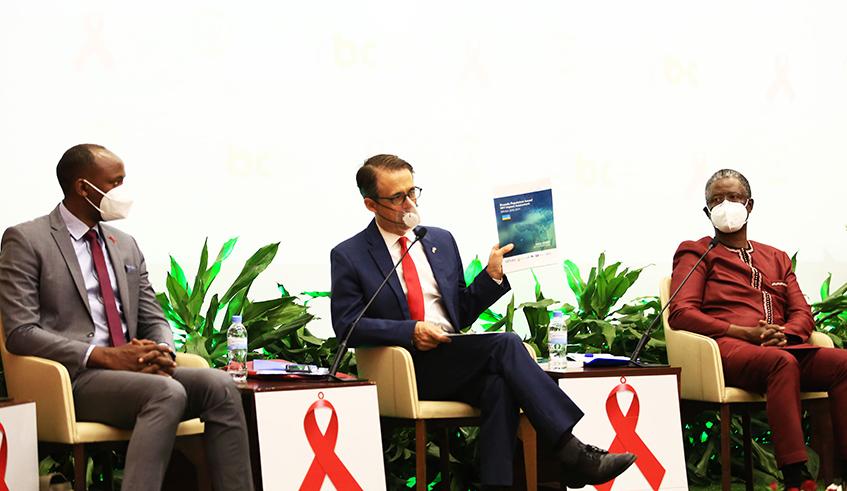Africa-Press – Rwanda. After registering significant success in the global targets between 2013 and 2020, Rwanda is now embarking on a more ambitious target to reduce the AIDS epidemic among its citizens by 2030.
Over the last seven years, Rwanda performed well above the United Nations Programme on HIV and AIDS (UNAIDS)’s targets on the pandemic on most of the indicators.
UNAIDS targeted that by 2020, at least 90 per cent of all people living with HIV will know their status, 90 per cent of all people with diagnosed HIV infection will receive sustained antiretroviral therapy and 90 per cent of all people receiving antiretroviral therapy will have viral suppression
For the first target, Rwanda achieved 84 per cent, 97.5 for the second and 90.1 percent for the third 90.
And now, medics look to build on this success to achieve new targets set by UNAIDS.
By 2030 targets of having 95 per cent of people living with HIV knowing their HIV status, 95 per cent of people who know their status to be on treatment and 95 per cent of people on treatment to have suppressed viral loads.
The targets also look at achieving zero HIV/AIDS related discrimination.
Speaking on Tuesday December 1, at a local World Aids Day event, Dr. Daniel Ngamije the Minister of Health said it is time to think about new measures of beating AIDS in the next ten years.
Here, he expressed the intentions to have Rwanda among the best performing countries in regard to achieving the 2030 global targets set by UNAIDS.
“That’s why I continue to call upon all Rwandans – be it religious people, the private sector, government institutions and our partners to continue the co-operation, so that we reach these target that the world pledged in regard to fighting HIV/AIDS,” he said.
“We shall continue to remember that defeating HIV/AIDS is a responsibility for me and you. It is not for just one person but for us all,” he added.
Among the issues that the country has to deal with going forward is ensuring that more and more of the infected people get to know their status; and reducing stigma tendencies among the youth populations.
Speaking at the event, Dr Sabin Nsanzimana, the Director General of Rwanda Biomedical Centre, questioned the reluctance of male Rwandans towards such HIV/AIDS programs.
“When you look at men, they are not doing as well as their female counterparts be it in testing or taking their Anti-Retro Viral drugs. And you find that men are more affected by this epidemic than women. This is one of the areas we need to put effort into, so we can address these issues,” he said.
Concerning stigma among the youth, Sage Semafara, the Executive Secretary of Rwanda Network of People Living with HIV/AIDS noted that a 2020 survey showed that HIV/AIDS related stigma and discrimination in Rwanda was at 13 index (very low) in the general population, it is higher than that among the youthful population,
“Some youths even refuse to carry their medication to school to avoid stigma,” she said. “The target is to achieve zero stigma and discrimination in 2030. We need to sensitize Rwandans and teach them to continue to make the situation better.”
About Rwanda’s HIV situation, the disease’s prevalence has remained stable at 3 per cent among the general population aged between 15-64 years old for the last decade, according to the Population-based HIV Impact Assessment (RPHIA) 2019.
Globally, there were 38 million people globally living with HIV- among them 1.8 million were children under 15 years old, 1.7 million people were newly infected with HIV and only 25.4 million (67 per cent) people accessed antiretroviral therapy.






